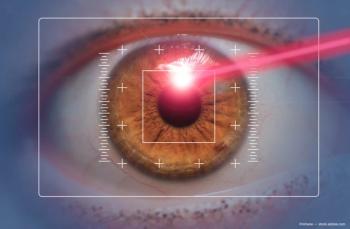
Custom topography-guided LASIK an alternative approach
Chicago—An early report of custom topography-guided LASIK indicates that it is quite effective in treating irregular astigmatism and enlarging optical zones, according to David T.C. Lin, MD, FRCSC.
Chicago-An early report of custom topography-guided LASIK indicates that it is quite effective in treating irregular astigmatism and enlarging optical zones, according to David T.C. Lin, MD, FRCSC.
Dr. Lin and Simon P. Holland, MD, FRCSC, conducted a study in which 80 eyes with small optical zones that were previously treated with LASIK underwent topography-guided LASIK re-treatment by flap lift with the Allegretto Wave laser system (WaveLight Inc.). An additional 120 eyes underwent topography-guided LASIK for irregular astigmatism using a Hansatome zero compression head (Bausch & Lomb) and the Allegretto laser. Irregular astigmatism and optical zones were measured with the Topolyzer (WaveLight Inc.).
Alternative to wavefront-guided
"It has a much wider range of applications than custom wavefront-guided LASIK," he noted.
Custom topography is a process in which the cornea is measured with a topographer, treating all 14,000 points on the cornea individually rather than treating the refraction of the eye as is done in wavefront procedures. Corneal irregularities are smoothed out in the process, said Dr. Lin, who is clinical assistant professor, University of British Columbia, and in practice at Pacific Laser Eye Centre, Vancouver.
"With custom topography, we can normalize these very irregular corneas by smoothing out the hills and filling the valleys by steepening around them," he added.
Optical zone enlargement
In the portion of their study involving optical zone enlargement, the investigators used a topography algorithm and determined the optical zone by measuring the central monodioptric optical zone (CMOZ). Each diopter equals one color, and the central, most uniform color that is measured is the CMOZ. With this system it is easy for technicians and clinicians to distinguish colors and determine the size of the zone, Dr. Lin said.
Newsletter
Don’t miss out—get Ophthalmology Times updates on the latest clinical advancements and expert interviews, straight to your inbox.
















































.png)


